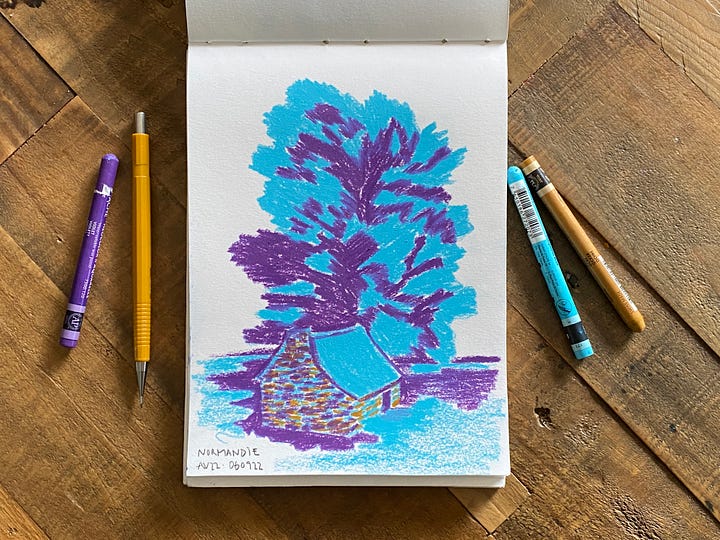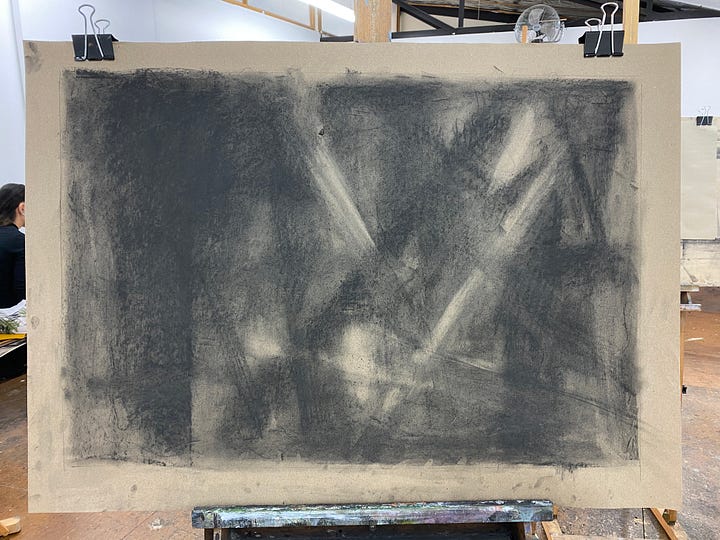If you get stuck, draw with a different pen. — Paul Arden

The other day, I came across a bold little statement in a book I’ve just finished reading. It’s called It’s Not How Good You Are, It’s How Good You Want to Be by Paul Arden—author and creative director—who shares nuggets of advice and encouragement mainly for people in the advertising industry, but advice that can apply to anyone in a creative career.
The sentence about drawing with a different pen to get unstuck really resonated with me. I’ve experienced this first-hand, and I truly believe it’s a great piece of advice. In fact, behind that simple idea lies a deeper approach to a creative life. It also got me thinking about my own creative process. Arden writes:
Change your tools, it might free your thinking (…) It is not a solution, but it does open up the mind and it’s fun.
Changing tools means, in essence, changing the way we see things. It’s like swapping lenses to gain a new perspective. This is precisely the main skill that many of the most creative people I know seem to have and apply unconsciously: they can effortlessly switch viewpoints, or rather, wear different hats, almost instinctively.
For some of us, however, due to cognitive biases, this process can be more difficult. We tend to cling to rigid ideas or familiar tools—the ones we know how to use and enjoy working with. We look at things through a more rational, well-known lens. We tend to reach for the same pens over and over simply because they feel safe and familiar.
But when we face new creative challenges, this more familiar approach can limit us. The tools we rely on may no longer serve us. And while repeated use of the same pen might lead to mastering a tool, it doesn't necessarily lead to mastering the craft.
Some of the best artists we admire have ventured into other tools or art forms from time to time as a means of creative expression. It’s no surprise that the most creative individuals are often drawn to multiple disciplines—they feel a natural urge to experiment with different tools. They crave that shift in medium, that change in perspective. And in doing so, they unlock new ways of seeing.
Paula Bonet began her career as an illustrator, but as her recognition grew, she gradually took ownership of her narrative and embraced the tools that truly resonated with her authentic self: at heart, she is a painter.
(By the way—something I recently read on the difference between illustration and fine art that has got me thinking: ‘Illustration tends to tell viewers what they already know, possibly with a rather entertaining twist, but essentially it is about getting the facts across clearly. However, fine art, particularly drawing, concerns itself with appearance—it is about telling viewers something they do not know or making a transformation that is surprising.’ — Guy Noble)
Back to Bonet, she now changes her pens—and brushes—quite regularly. She is also a writer, having published several books and written various articles.
And this is David Hockney on using an iPad to paint, embracing digital drawing later in his career and how using new tools opened new ways of seeing and expressing:
The moment you cheat for the sake of beauty, you know you're an artist. Changing tools changes how you see.
When I reflect on my own career as an architect and urban designer, I can clearly see the value in shifting between different tools to arrive at specific solutions. In fact, we’re constantly switching tools—it’s part of the job. On any normal day, I might hand-sketch, use 2D and 3D drafting software, edit images or lay out reports using Adobe programs, build presentations in PowerPoint, or even turn to Excel to get some numbers.
In my personal, artistic practice, I’ve learned a great deal from drawing with a different pen—literally. I first began drawing at university with ink pens, as our tutors didn’t allow us to use pencils because the idea was to embrace mistakes rather than erase them. Years later, I returned to a soft (mechanical) pencil, usually a 2B 0.7 or 0.9 lead, but a few years ago I discovered Neocolor pastels and gave them a try. That small shift opened up so many ideas. And, borrowing Paul Arden’s words, it was a lot of fun. From there, I returned to pencil again, but with a new sensitivity and interest on the relationship between tone and colour.




My piece of advice is this: don’t wait until you feel stuck to change tools. Do it often, do it intentionally. It opens up space for surprise, for play, for new creative pathways. And, in any case, it’s a lot of fun.
✏️✨
Happy sketching!
Ana




Thanks for another interesting post, Ana. The advice to change tools before we get stuck is good because it keeps the creative brain working. I was surprised when Hockney started using the iPad but his work in this medium is superb. What a star.